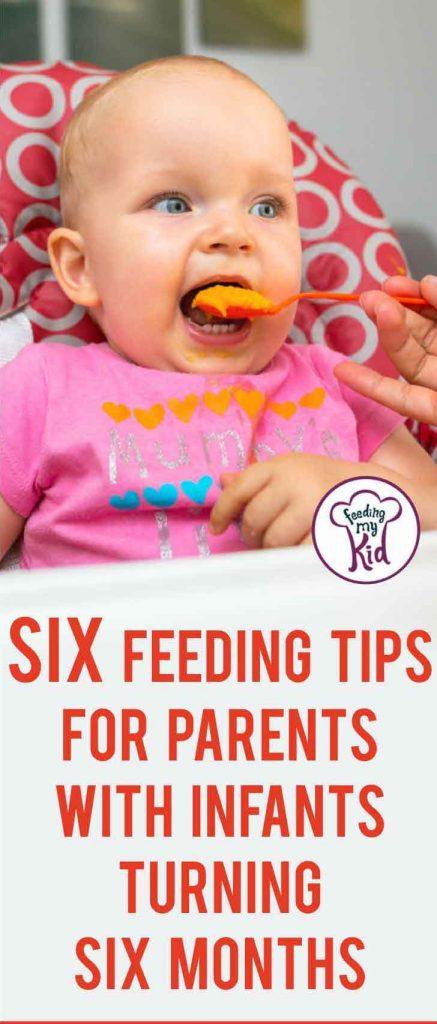 Infant Care and Feeding Tips for 6-month-olds
Infant Care and Feeding Tips for 6-month-olds
Being a parent to a young child isn’t easy, especially with all the different sources information out there on infant care. I appreciate that it can be a real challenge understanding just what your child should be eating as he or she grows older.
That’s where today’s article comes in.
My goal today is to help simplify some of the major dietary changes that should occur when your child hits 6 months of age. The topic was inspired by my good friend Sarah whose lovely daughter Claire just turned 6 months old.
Let’s take a look at my 6 infant care tips for feeding a child that just turned 6 months old:
- Supplement Vitamin D in breastfed infants: Exclusive breastfeeding is recommended for the first 6 months of a child’s life. Beyond that, the continuance of breastfeeding should be supported if the mother and child both want to continue. As long as your child is breastfed he or she should receive a daily vitamin D supplement of 10 µg (400 IU). Check out this list of vitamin rich foods you can feed your 6-month-old.
- Introduce meat, meat alternatives, and iron-fortified cereals as the first complementary foods: At 6 months of age exclusive breastfeeding is no longer sufficient to meet all of a child’s nutrient needs. That is why the introduction of “complementary foods” is necessary at this time. Start with iron-rich choices such as chicken, beef, pork, lentils, tofu, beans, and eggs. When serving non-meat sources of iron, incorporate vitamin C rich foods (fruits and veggies such as oranges or tomatoes) to help with iron absorption. Be wary of the fact that too much cow’s milk may interfere with your child’s iron levels, so if you plan on incorporating it, do so only gradually and not until 9-12 months of age.
- Encourage your child to enjoy a variety of foods and textures: You can offer your child a new food every few days just as long as you only offer one new food at a time, but don’t continue to offer foods that you suspect may cause an allergic reaction. Stick with soft, mashed or minced foods that are cut into small pieces, including foods that rest of the family is eating. A great way to introduce new foods is with a topping bar.
- Keep food safety in mind: Special care should always be provided to infants when it comes to food and feeding time. Always supervise your child while they eat, ensure they are upright while eating and steer clear of solid foods that are hard, small and round (ie: nuts, seeds, popcorn). Honey should be avoided in children less than one year of age and any raw or unpasteurized foods including meat, milk, and juice should also be avoided.
- Keep meal times tranquil: So often we overlook this very important component of eating, whether it is for our child or ourselves. Of course what is being fed matters, but so does the environment where feeding takes place. Keep meal times peaceful and unrushed to help foster a positive relationship with food and let your child enjoy what they eat at their own pace and in the amounts that they want.
- Provide small amounts of water in a lidless cup: It is important for your child to start to learn how to sip small cups of water from a lidless cup. The process will take time, trial and error and only small amounts of water should be used as sipping other liquids may contribute to tooth decay in infants. Want to know if sports drinks are okay? Find out why they aren’t that healthy for kids.
Infant Care and Nutrition Is Not a Once Size Fits All
Keep in mind that today’s article is just a quick highlight of some the more important considerations and that infant nutrition does have more layers to it.
Do not hesitate to contact your child’s health care provider if you unsure and be sure to always search out reputable sources of information. (As a Canadian dietitian, Health Canada is my go-to).
Thanks for reading and I truly hope today’s article helped.
Want to see more of Andy’s writing? Check out all of his articles.


